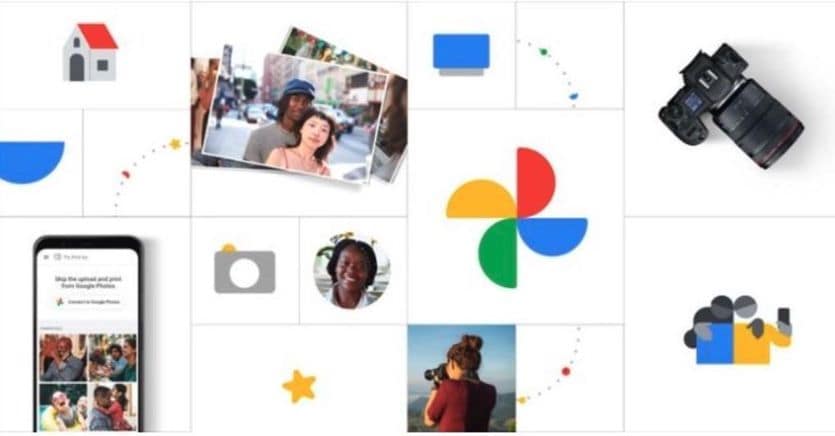A few more days, or rather a few hours and the convenience of having all the shots taken with your smartphone stored in the digital drawer of Google Photos or the possibility of manually uploading the original photos in high quality recompressed format, without limitations whatsoever and without occupying precious Gbytes of storage space, will fail. As of June 1 (widely communicated in recent months and remembered by the Mountain View giant in a recent one), in fact, the service will continue to take photos and videos but to do so it will occupy the free space in the cloud of 15 Gbytes reserved for every BigG user.
In essence, the rules of use of the app launched in 2015 and become one of the most adopted ever for photo management, both in the Android and iOs environment, change. Rules that Google has punctually detailed: the high quality and standard quality content will be counted towards the storage space in your account and once the free storage limit is reached, you can subscribe to Google One to activate additional memory space or delete content and continue with the free storage option. Anyone who is inactive for 24 months or more on Drive, Gmail and Photos, on the other hand, could have their account deleted, resulting in the loss of stored data. Good news, on the other hand, for those who have a Pixel smartphone in their pocket (series 1 to 5), who will be granted unlimited use of Photos even after the deadline, even if only for the photos and videos that will be backed up from the your device.
Loading…
The costs of the paid service
Those who decide to store their content in Google Photos must therefore take into account to shell out € 1.99 per month remaining within the threshold of 100 Gbytes, while to go up to 200 GByte or even 2 terabytes will need 2.99 and 9.99 euros per month respectively. In view of the fixed deadline, here is the first useful information for users: all high resolution images uploaded before June 1st will not count towards the 15 GByte limit, and this could be a good time to order your photo collections and move (or copy) them online.
The new tools available in the app
To avoid losing precious memories and facilitate the task of all users of the service, Google has announced the availability of some (free) tools that will surely help its customers. Within the application, for example, a special tool will highlight the photos and videos that could be removed because of bad quality or because they are simple screenshots so as not to occupy precious space unnecessarily. Also from the app it will also be possible to view a personalized estimate of how long it will take before consuming the 15 Gbytes available: an algorithm will analyze the frequency with which you back up photos and videos, the amount of images uploaded each time and all other files related to the Google account. According to preliminary estimates released by the company, 80% of users of the service currently have useful space for at least another three years. Finally, with the skin change of Photo, the function that allows you to save photos and videos in “space-saving” mode will be renamed: “Excellent Quality” will be replaced by “Storage Saver” but in fact its peculiarities remain the same.
With Android 12 stop the automatic loading of screenshots
The new life of Google Photos will also find concreteness with the launch of the new version of the operating system of the green robot. In fact, at the recent Google I / O, two changes have been anticipated that should resolve some functional defects of the service on Android devices. The first concerns the automatic upload of screenshots to the cloud in the cloud space, which the app engine fetches from the “Dcim” folder of the smartphone, automatically backing up the photos. To eliminate the risk of possible violations of images containing passwords or other personal information, upload online or reduce the space occupied with unnecessary elements, Android 12 will direct the storage of screenshots in a different and dedicated path, avoiding that they can be mixed with the roll photographic. The user will then choose whether or not to backup that folder to Google Photos. The other novelty concerns the management of access permissions to local files of the new software, which will also allow applications such as Google Photos to delete photos and videos with a single request, without having to confirm this operation twice (as happens today).
